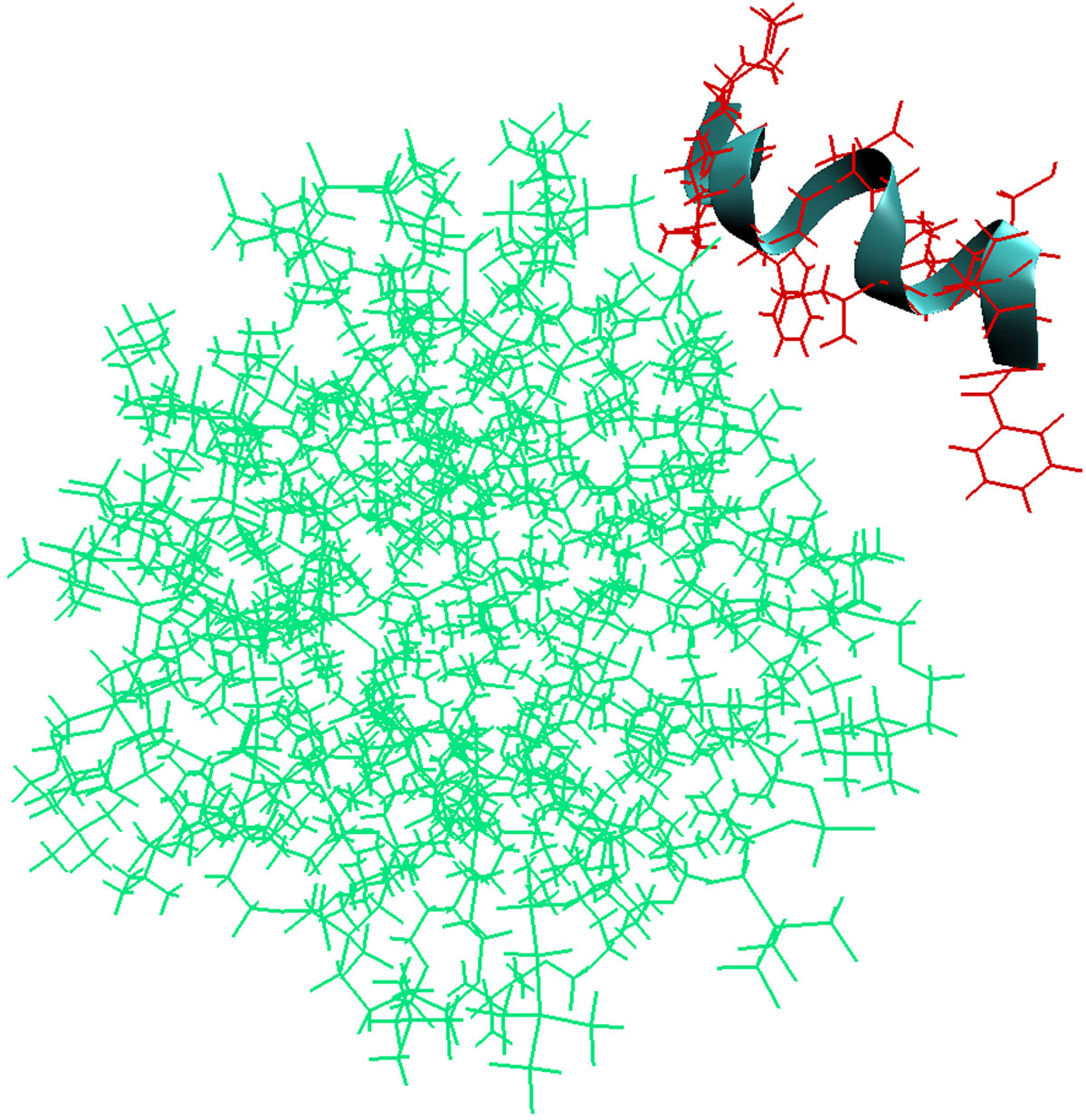|
Relative binding free energy calculations for antimicrobial peptides to SDS and DPC micelles
We present relative binding free energy calculations on a set of complexes of two surfactant micelles and the scorpion derived antimicrobial peptide (AMP), IsCT, and two of its analogs. Equilibrium structures of the peptides, micelles and peptide-micelle complexes are obtained from snapshots taken from up to 50 ns molecular dynamics simulations. A thermodynamic cycle is introduced to decompose the binding free energy into electrostatic, non-electrostatic and entropic contributions. The electrostatic solvation energies of each peptide, micelle and peptide-micelle complex are calculated using Poisson-Boltzmann and averaged over sufficiently long time and multiple conformations. The non-polar contributions to the free energy are approximated using a linear solvent-accessible surface area relationship. The entropic part of the free energy is decomposed into translational, rotational, conformational and vibrational contributions. The interfacial electrostatic properties of dodecylphosphatidylcholine (DPC) and sodium dodecylsulphate (SDS) micelles are assumed to be similar to those of zwitterionic mammalian and anionic bacterial lipid membrane interfaces. Although it is difficult to compute absolute binding free energies, relative binding free energy calculations of two of the scorpion derived AMP analogs to SDS and DPC micelles are shown to be in agreement with the experimentally observed rankings for peptide antimicrobial activities and hemolytic toxicities. Finally, these calculations have the potential of screening mutant peptides for high antimicrobial activity as well as low hemolytic toxicity, and thereby optimizing therapeutic efficiency.
IsCT-DPC complex
|
